Content
Revna cherries have recently appeared in the arsenal of amateur gardeners. Despite this, the variety has already become quite popular. The reason for this is good yield and good frost resistance, which makes it possible to grow this type of cherry even in the cool climate of Central Russia.
History of selection
Cherry Revna is one of a number of varieties bred at the end of the last century by specialists from the All-Russian Research Institute of Lupine. The variety is named after the river of the same name, flowing in the Bryansk region, where the institute itself is located. The Bryanskaya Rozovaya variety was taken as the basis; selection was carried out using the free pollination method. The authors of the Revna cherry are breeders M.V. Kanshina and A.I. Astakhov.
In 1993, the cherry variety Revna successfully passed state tests and in 1994 was included in the State Register.
Description of culture
Cherry Revna is a small spreading tree. It is widespread, mainly in the southern regions.
Characteristics
The table shows the main characteristic features of the Revna cherry variety.
Parameter | Meaning |
Type of crop | Fruit stone fruit tree |
Height, m | Until 3 |
Bark | Burgundy brown |
Crown | Pyramidal |
foliage | Average |
Leaves | Large, leathery, dark green, round with a sharp tip. The edge is sharply serrated. |
Escapes | Fast growing, straight |
Fruit | Medium, dark red in color, rounded-flattened in shape. Berry weight is 4.5–4.7 g, rarely up to 7 g. |
Pulp | Dense, dark red |
Taste | Sweet, tasting rating – 4.9 out of 5 |
Bone | Easily separated from the pulp, medium size |
Purpose of the variety | Universal |
Transportability | good |
Drought resistance, winter hardiness
Winter hardiness was one of the priorities when developing the Revna cherry variety. The result was good. The tree can withstand frosts down to -30 degrees Celsius without any problems.
Revna's drought resistance is quite high. However, regular watering of trees is still necessary, especially during the period of fruit set and ripening.
Pollination, flowering period and ripening time
The Revna cherry blossoms quite early. In different regions, the flowering time is different; in the middle zone it occurs in mid-May.
Revna is considered a partially self-fertile variety, but without neighboring pollinating trees the harvest will be small. Therefore, cherries are usually planted in groups. The varieties Iput, Tyutchevka or Ovstuzhenka are most often planted as pollinators.
Cherry Revna is a mid-late variety. Typically, 2.5 months pass from the moment of flowering until the berries are ready for picking.Good sunny weather can speed up this process. Usually the harvest ripens by the end of July.
Productivity, fruiting
Revna cherries begin to bear fruit in the 5th year. Its productivity is stable, annual and quite high. On average, it is 15–20 kg per tree, and with good care - 30 kg of berries or more. The fruits are not large in size, but they have a beautiful presentation and rarely crack. The thick peel allows the berries to withstand transportation without problems.
Area of application of berries
Revna cherries have an excellent sweet taste and are most often consumed fresh. However, they can also be used to prepare compotes, as well as preserves, confiture, and jams. The high sugar content (almost 13%) makes this berry suitable for home winemaking.
Resistance to diseases and pests
Cherry Revna gets sick relatively rarely. Mostly, diseases appear when care rules are violated (thickening of the crown, excessive watering) or in conditions of high moisture content. The biggest pests of cherries are birds, which love to feast on ripe berries (in everyday life, cherries are often called “bird cherries”). The most common insects that appear on trees are weevils and aphids.
Advantages and disadvantages
Revna cherries have few disadvantages. The most significant of them is the late entry into fruiting, which occurs only in the 5th year. Compared to other varieties of cherries, Revna ripens relatively late, many gardeners consider this a negative side. Another disadvantage is the need for pollinators to obtain a good harvest.
The positive aspects of Revna cherries include:
- Small size of the tree and compact crown.
- Good winter hardiness.
- Immunity to many fungal diseases.
- Excellent fruit taste and versatility.
- High transportability of the crop.
It should also be noted that the Revna cherry bears fruit annually and consistently, without requiring special care.
Landing Features
A special feature of planting Revna cherries is the need for group planting. Moreover, seedlings should not overlap with other trees, so as not to disturb cross-pollination.
Recommended timing
The optimal time for planting Revna cherry seedlings is spring, after the soil has thawed, but before the buds begin to swell. At this time, the plants are at rest and will calmly tolerate the stress associated with transplantation.
Choosing a suitable location
Since Revna cherries are planted in a group of seedlings, the place for them must be carefully selected. For normal growth and fruiting, a sufficient amount of sun and water is necessary, but wetlands or places with a groundwater level higher than 2 m are not suitable. The southern slope of the hill is ideal for planting Revna cherries. The place should be at a sufficient distance from fences and buildings, and also protected from the north wind, which this culture really does not like.
Revna cherries grow best on loamy and sandy loam, as well as on light fertile soils with neutral acidity. Heavy clay areas are contraindicated for it.
What crops can and cannot be planted next to cherries?
Cherry is a fairly strong antagonist. It is best to plant the same cherry tree in close proximity to it; this will improve pollination and will not lead to conflict.Cherry, which itself does not like being next to anyone, gets along surprisingly well with cherries. You definitely shouldn’t plant an apple, pear or plum tree nearby, they will interfere with cross-pollination.
Flowers grow well next to cherries: nasturtiums, primrose. You can also plant thyme. But nightshades (potatoes, tomatoes) will not grow in the root zone of cherries.
Selection and preparation of planting material
Revna cherry seedlings of both the first and second years of life are suitable for planting. When choosing planting material, you should pay attention to the following:
- The seedling must have a well-developed root system.
- The roots should not be dried out.
- The grafting site should be clearly visible at the bottom of the trunk. If it is not there, most likely it is a seedling, and a cherry without varietal characteristics will grow from it (wild cherry).
Landing algorithm
Pits for planting Revna cherries are usually prepared in the fall. The distance between them should be at least 3 m. The pits should be at the same or greater distance from buildings or other garden trees. The diameter of the pit should be 0.8–1 m, depth – 0.6–0.8 m.
Near the center of the hole you need to drive in a support to which the seedling will be tied. A mound of nutrient soil is poured into the center of the hole, on which the seedling is placed. Its roots need to be straightened, covered with soil mixture and compacted a little.
After planting, an earthen roller is placed around the seedling to retain water. After this, abundant watering is carried out (3-4 buckets), after which the tree trunk circle is mulched with humus, sawdust or peat.
Subsequent care of the crop
The basis of a good harvest is the proper formation of the tree crown. To do this, formative pruning is carried out, which is carried out in several stages over the first few years. The following types of crown are usually formed:
- sparsely tiered;
- flattened;
- bush-like.
To obtain a good harvest, Revna cherries need sufficient water. If there is a lack of moisture, watering can be done once a week. However, such dry periods are quite rare and, as a rule, precipitation is enough for the tree.
Fertilizing is an important part of caring for cherries. As a rule, it is not done for the first three years after planting, especially if the soil on the site is quite fertile. Then, once every three years, organic matter (humus) is added to the soil along with the autumn digging of the tree trunk circle.
During the season they also fertilize with mineral fertilizers. In the spring this is ammonium nitrate, it is added in three stages:
- before flowering;
- at the end of flowering;
- 2 weeks after the previous feeding.
For 1 sq. per meter, 20–25 g of fertilizer is applied. In addition, in the summer you can foliar fertilize trees with potassium monophosphate.
Revna cherries are not covered for the winter. Tree trunks and lower skeletal branches need to be whitened to protect the bark from frost damage and sunburn.The tree trunk can be tied with spruce branches to prevent hares and other rodents from coveting it.
Diseases and pests, methods of control and prevention
Revna cherries are not prone to diseases. They are usually the result of poor care or unfavorable weather conditions. Here are the most common ones.
Disease | Signs of appearance, consequences | Prevention and treatment |
Hole spot (clasterosporiasis) | Round brown spots appear on the leaf blade, which rot through and form holes. | Affected leaves should be torn off and burned. For preventive purposes, trees are treated with 1% Bordeaux mixture before flowering, after it and 2 weeks later. |
Mosaic | Yellow stripes appear along the veins of the leaf, then the leaf curls, turns red and falls off | Affected leaves are torn off and burned. For prevention, the same means are used as for spotting. |
Among the pests most often found on Revna cherries, the following insects can be noted:
- cherry fly;
- cherry aphid;
- fruit moth;
- cherry shoot moth.
They fight pests by spraying with various pesticides (Decis, Inta-Vir, Karbofos), selecting their concentration in accordance with the instructions.
Revna cherry remains quite popular among gardeners. The totality of all its positive properties far exceeds its minor disadvantages. And the excellent taste of the berries deservedly makes it one of the leaders among garden crops.
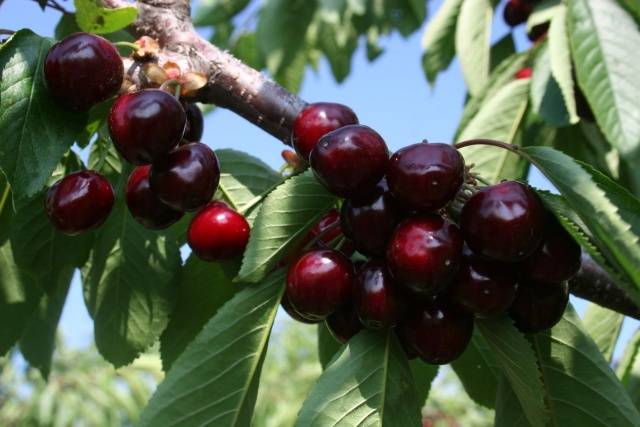
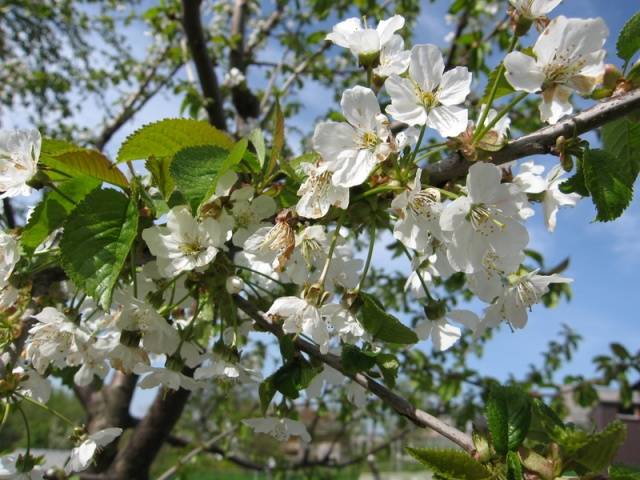
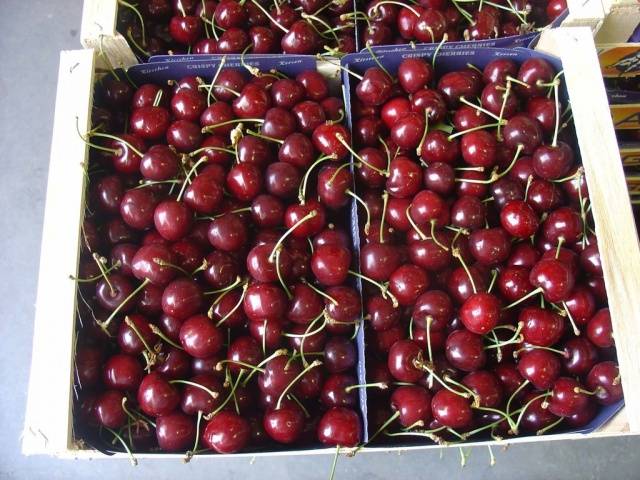
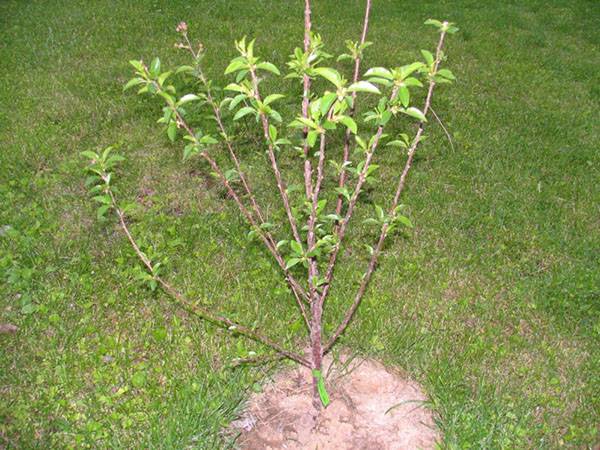
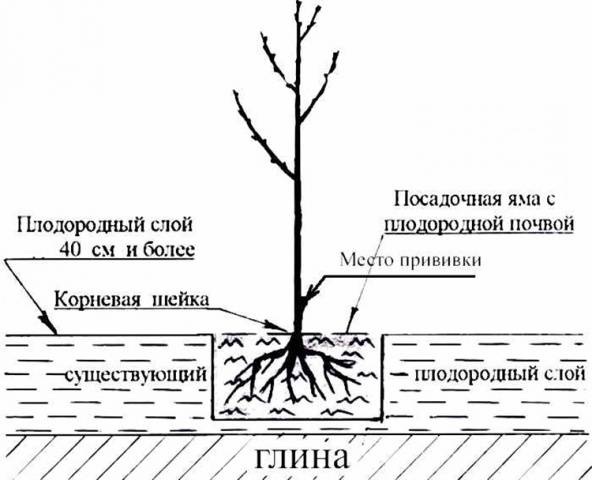
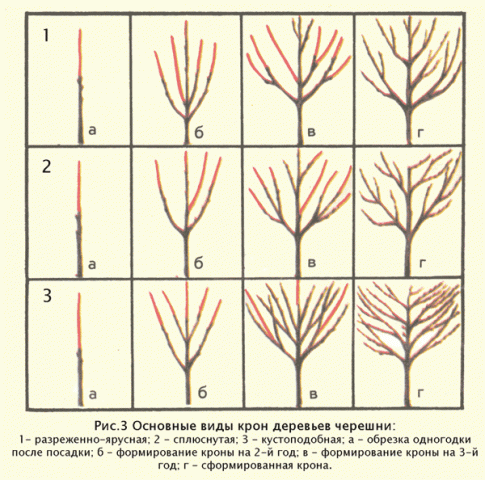
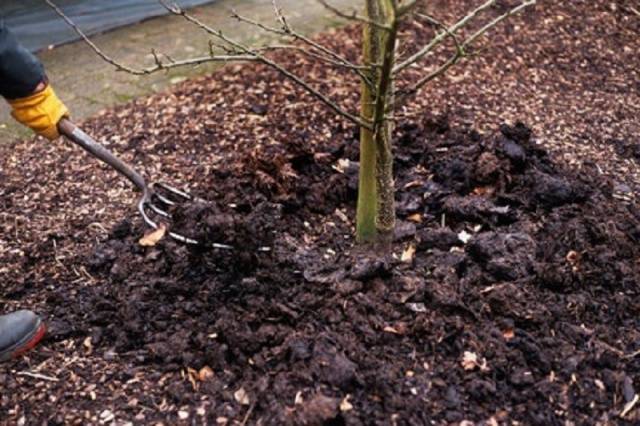


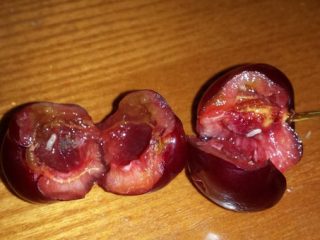
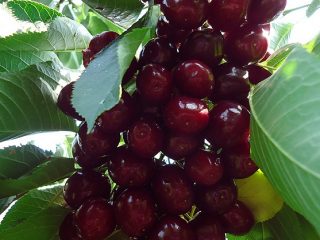

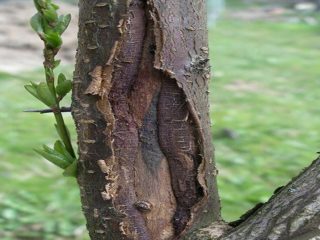


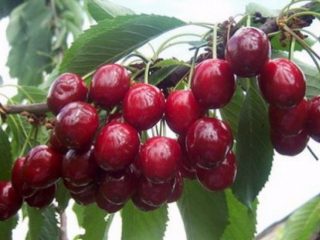
My Revna gave her first harvest in 2022, not much, but she is only three years old. The neighboring cherries have not yet bloomed, none of the neighbors have any other cherries, there are only old cherries in the area. I have no idea where she got the pollinator. The berries taste excellent and sweet. Three cherries are still growing - Iput, Tyutchevka and Ovstuzhenka. They tolerate winters well, despite the fact that in 2020-21 we had up to 37 winters. The young cherries froze, but were able to recover. In general, cherries are the most problem-free trees; I don’t dance with tambourines around them